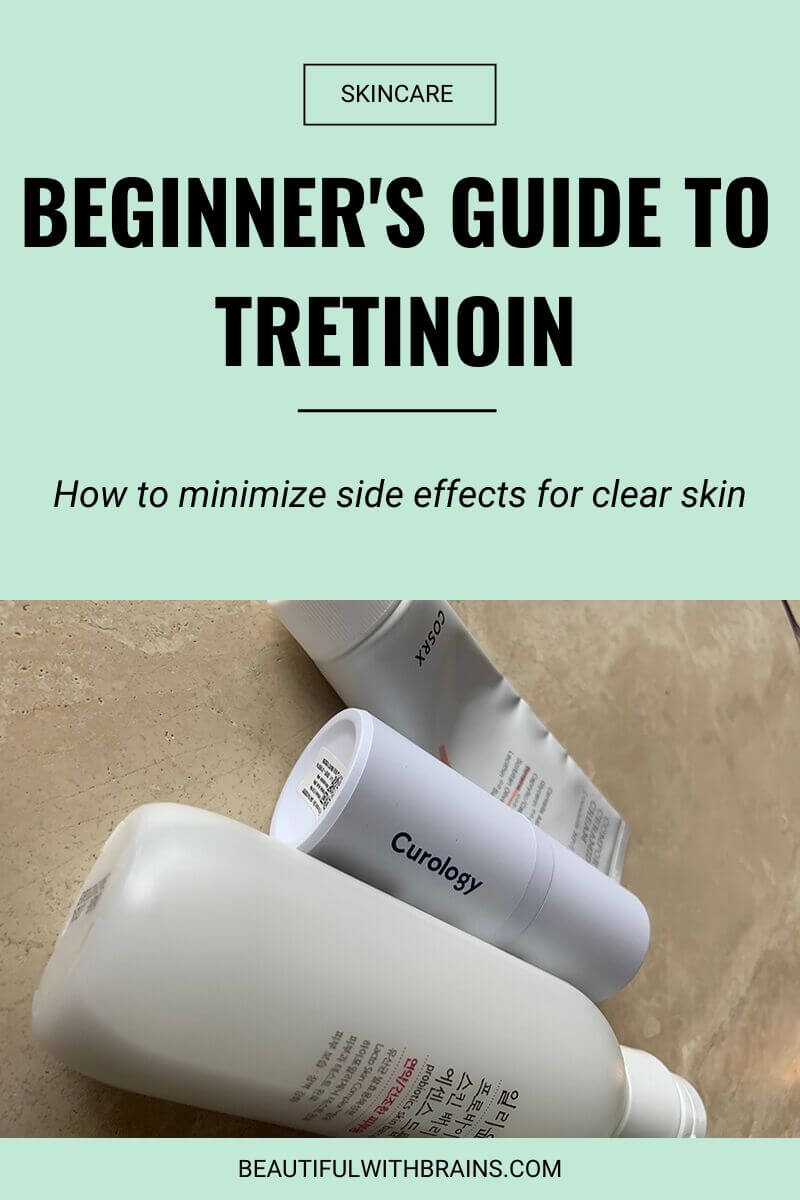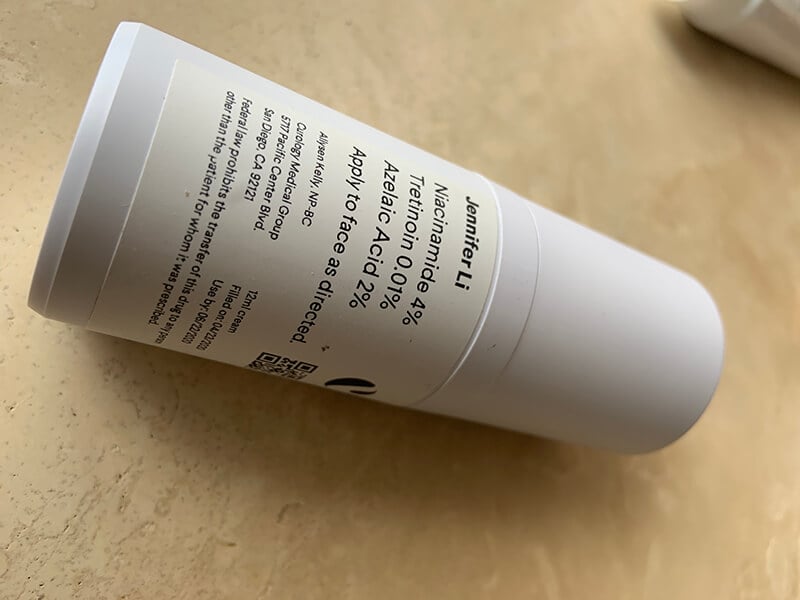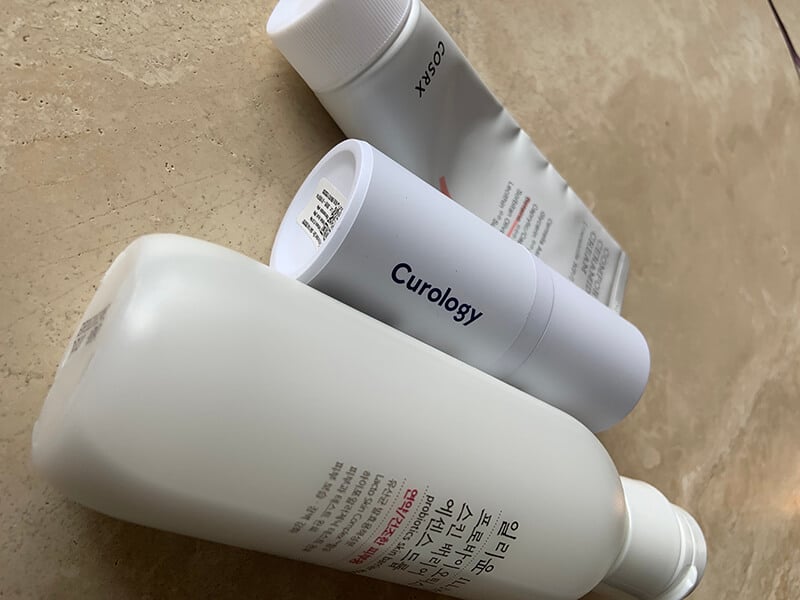
I started my Curology prescription of tretinoin in late November 2019, and despite my best efforts to acclimate to 0.01% tretinoin, it’s been an uphill battle. Yes, 0.01% tretinoin.
I know it’s not much–I SAID WHAT I SAID! But that’s the thing about skincare: it’s never one-size-fits all, and two people can react very differently to the same ingredients or usages.
So, What Exactly Is Tretinoin?
Put simply, tretinoin is a potent derivative of vitamin A and it’s commonly used to correct wrinkles, melasma, and sunspots. It’s a particularly aggressive form of vitamin A, with a high concentration of retinoic acid.
There’s a plethora of names for it, including trans-retinoic acid and Retin-A, but I’ll refer to it as tretinoin in this article.
It’s also great for acne! Tretinoin is a well-researched ingredient that has proven anti-aging properties. By accelerating the natural skin turnover rate, tretinoin evens out the complexion, fades dark spots, firms lines, and promotes collagen production and elastin production.
It’s cousin, retinol, may sound familiar. Compared to tretinoin, retinol is much less potent and can be used in over-the-counter products. Tretinoin, on the other hand, is doctor prescribed. Thankfully, with the convenience of telehealth services, it can be prescribed through an FDA-approved prescription skincare company!
Related: Which Form Of Retinoids Is Right For You?
Need help creating an anti-aging routine that really works? Sign up to the newsletter below to receive the “Anti-Aging Skincare Routine Cheatsheet” (it includes product recommendations, too!).
Sounds Like It’s Great To Use! Why Do I Need A Survival Guide?
So, the thing about tretinoin: it has a learning curve. And because using it accelerates skin turnover rate, tretinoin also comes with a lot of uncomfortable side effects, like redness, dryness, flaking, stinging, and sensitivity.
For me, a lot of symptoms overlap with being over-exfoliated, so I’ll even start getting some painful blind pimples. It’s not exactly the cutest look.
Keep in mind, breaking out is normal when starting out on tretinoin. Tret accelerates skin turnover, which is going to push all the quietly percolating pimples under your skin to quickly rise.
This process is called purging, and the pimples that are usually brought to the surface of your skin tend to be small whiteheads. Purging can last up to six weeks, but it can also just not happen at all. Again, not exactly the cutest look.
Related: Is It A Breakout Or A Purge?: Here’s How To Tell (And What To Do About It)

How To Mitigate Tretinoin Side Effects
Well, I’d still like to try out tretinoin. What can I do to mitigate the effects?
There’s plenty that you can do to mitigate the effects, so pop a squat!
1. Start Slow
Listen, I get it. I have problems with moderation and when I get a new product, I get greedy and excited and just want to use it a lot. However: going from 0 to 100 with tretinoin is never NOT going to end badly.
While some people might be able to tolerate daily usage, other people might only be able to tolerate daily tretinoin diluted with another lotion. There are also other people who can only use tretinoin a few times a week for maybe 20-30 minutes at a time before washing it off.
You can still reap the benefits of tretinoin through short-contact therapy! Personally, I can only use it twice a week for 20-30 minutes before I wash it off and apply my other skincare. And that’s okay: short-term exposure can still produce great benefits to the skin! So start slowly and experiment with what works for you.
Related: Retinol Side Effects: What They Are And How To Deal With Them
2. Be Gentle
Tretinoin is some pretty potent stuff, and you don’t want to further irritate your skin while adjusting to tretinoin. Use very gentle, simple products:
- Gentle cleansers are going to be especially important while adjusting to tret; try out sensitive skin milk cleansers.
- Avoid irritants like fragrance, essential oils, fruit extracts, and other active ingredients.
- Ingredients like vitamin C and AHA/BHA are great ingredients, but are probably too strong while you’re adjusting to using tretinoin.
- Keep away from physical exfoliators like sugar scrubs or Clarisonics! Lay off of them for now; they’ll still be there when you’ve adjusted!
Related: Skincare Ingredients I Avoid And Don’t Recommend

3. Listen To Your Skin
How much is too much? Well, your skin will tell you!
If your skin feels tight and stings at the slightest provocation, back off the tretinoin for a little bit. It’s a natural and normal side-effect to be extra sensitive, so just pull back for a few days and then try again.
If your skin really isn’t vibing with tretinoin on a daily basis, or every other day, or undiluted, that’s all okay. Tret need to be working for you on your terms, not the other way around!
4. Use Barrier Reinforcing Products
Sometimes, just going slow and being gentle isn’t enough. Case and point: me. It’s okay to need a little supportive fire!
Tretinoin’s potency can compromise the integrity of our moisture barrier, which triggers a lot of sensitivity, stinging, and redness.
Products that help rebuild your moisture barrier are going to be your best friends while adjusting with tretinoin. Keep an eye out for ingredients like ceramides, panthenol, sea buckthorn oil, centella asiatica (also commonly known/marketed as tiger grass or cica), and lactobacillus.
You want your skin fattened up with supportive ingredients that will keep your barrier plumped, soothed, and strong. If you want product suggestions, head over to my website and check out my full over-exfoliation/irritation product masterlist!
Related: How To Strengthen Your Skin’s Protective Barrier (And Why It Matters)
5. Manage Your Expectations
Using the tips above will help mitigate the worst effects, but there’s no telling how much these tips will stave off redness, stinging, or flaking. That’s a much more personal experience that I, a stranger, can’t exactly speak on.
But keep in mind that the adjustment period still might be a little ugly, for all your efforts. (All the more reason to try it while we’re all in quarantine, right?)
The Bottom Line
Honestly, choosing to use tretinoin is a personal decision. If you don’t want to use it, that’s totally fine. If you want to use it, that’s totally fine too. But if you’re committing with tretinoin and you’re struggling with the adjustment, hang in there! You’re not alone, honey: tretinoin users are all going through it–and we are going to make it out on the other side with glowing skin!

1 Comment on A Tretinoin Survival Guide
Comments are closed.